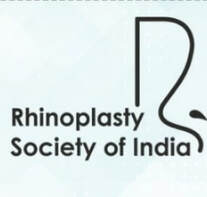|
Blepharoplasty is the surgery of the eyelids. Depending on which lid is being treated it is referred to as upper or lower lid blepharoplasty. It is one of the more commonly performed cosmetic procedures of the face.
Our eyes are considered to be the most important aesthetic units of our face. They are considered as windows to our soul probably because they easily reflect our level of alertness, mood, and sense of well-being. The eyes are also subject to early signs of aging. These changes reveal as extra folds of skin in the upper lid which in some advanced cases can hamper our visual fields. This may be accompanied by loss of definition of the area immediately below eyebrows. The lateral corners of eyes may shift downwards giving rise to a tired appearance. Lower lid undergoes changes as a result of the loss of support of eyelid tissues. They may shift downwards with more display of the white below cornea. There may be baggy swellings of lower lid as a result of protrusion of fat around the eyes. The lower eyelid appears lengthened with an abrupt demarcation between lower lid and cheek. The youthful 'blending' of lower lid and cheek is lost with age. Blepharoplasty benefits those with aging changes of the eyelids. It is also undertaken for those who need an alteration of their prominent epicanthal folds. It can also be undertaken for individuals who desire an extra fold in the upper lid. Evaluation for blepharoplasty begins with a preoperative consultation when a patient indicates her concerns to the physician. Patients should come prepared to reveal details of the previous treatment of the eyes (for example, LASIK, use of contact lens) and systemic illnesses. The physician suggests treatment options based on changes present in the eyelids and neighboring structures. A consultation with an ophthalmologist is also arranged. The patient is advised to stop all forms of herbal supplements and blood thinners for two weeks before the scheduled procedure. Isolated blepharoplasty of the upper lid is usually carried out under local anesthesia with sedation. More extensive procedures involving the lower lid may necessitate general anesthesia for the comfort of the patient. The choice of anesthesia is decided in consultation with the anesthetist. Patient recovery is usually rapid and she can return home the same day or the next. Sutures are pulled out by the end of the first week. Swelling starts to subside after the first 36 hours. If the surgery involved a number of steps, the swelling may take longer to subside. Patients are usually presentable at the end of second to the third week. When properly executed, blepharoplasty is one of the most gratifying procedures in cosmetic surgery. It gives rise to alert and youthful looking eyes. To learn more about other facial plastic surgery procedures, click here.
Female genital cosmetic surgery (FGCS) is an emerging field, comprising of procedures undertaken for improvement in the appearance of female genitals. It is a popular field as witnessed by the increasing number of patients undergoing these procedures.
Recent times have seen an improvement in awareness about the appearance of genitals due to easy access to pornography and genital hair removal. If a woman feels 'deformed' due to the appearance of her genitals, it can result in psychological issues with feelings of low self-esteem and confidence. Many of such individuals hide their concerns from their physicians. Proper treatment begins with a consultation when a patient is able to express her concerns to the physician. The various treatment options, plan, and risks are discussed with the patient after a physical examination. Some of the commonly performed FGCS procedures are: 1. Labia minora reduction: This is a procedure carried out for women who desire a change in the appearance of their enlarged labia minora ( inner labia). Most commonly labia minora are enlarged from birth. Aging and childbirth can contribute in some cases. Enlarged labia may be a source of discomfort during sports or while wearing tight undergarments. It can result in chronic irritation. Labia minora reduction or 'labiaplasty' involves removal of the most protuberant part of the labia as a 'V'. This may be extended to tackle enlarged clitoral hoods. The suture line is usually undetectable. The procedure is carried out under local anesthesia with sedation or under general anesthesia. It is usually carried out as an outpatient procedure. Patients can return to light office work in 5 to 6 days. Sexual intercourse can be resumed after 8 weeks in sexually active individuals. 2. Labia majora reduction: Labia majora ( outer labia ) can be enlarged as a result of childbirth, aging and weight gain. This can be due to an excess of fat or skin. Both can contribute to the enlargement in some cases. Preoperative consultation enables the surgeon to understand patient's concerns. The enlarged labia are treated with excision of skin and/or fat as bilateral ellipses. The procedure is carried out under local anesthesia with sedation or general anesthesia. It is carried out as a short stay procedure and the patient can return home the same or next day. 3. Mons lift and liposuction: Mons can undergo enlargement following weight gain or aging. This may be accompanied by drooping of the tissues. Mons lift is carried out for a reduction in the size and improvement in position. This involves reduction of the fatty tissues with liposuction and anchoring of tissues of mons to abdominal fascia for long standing results. The techniques in FGCS continue to evolve along with an increase in the application of these procedures. When undertaken after proper screening and counseling, these procedures have been found to significantly improve the associated psychological issues with high satisfaction rates.
It is a commonly held that belief that cosmetic surgery is expensive. But is it true? Compared to treatments in other surgical specialties like spine or brain surgery, is cosmetic surgery more costly? If one were to analyze the reasons behind such a perception the following seem to contribute.
1. Rich and famous undergo: One comes across reports of cosmetic surgery treatments among rich in popular media. Since rich seem to be the customers one may associate this specialty as catering exclusively to the well-heeled population. 2. Nonessential surgery: Since cosmetic enhancements and anti-aging treatments are not life-saving these tend to get categorized as a luxury. As luxury has always commanded a premium the whole undertaking of cosmetic enhancements may seem expensive. 3. The 'plastic' of plastic surgery: The etymology is different from other specialties which derive their names from organ or organ systems. Though 'plastic' translates into 'to mold', it does remains a bit different compared to names of other specialties. This may not help either. The total cost of a procedure is a sum of smaller components. These include charges by the surgeon, anesthetist, consumables (may include implants) and charges levied for use of the surgical facility. All these add up to form the final bill. It is the personal opinion of the author that cosmetic surgery is not more expensive compared to other specialties when one takes into account variables like years of training of the physician, experience, duration and difficulty of the procedure, consumables used and length of hospital stay. Until there is an increase in awareness about plastic surgery, including various treatment options, one will continue to come across perceptions such as it being very expensive and fancy. |
AuthorI like to keep it simple. CategoriesArchives
June 2024
Categories |
- Home
-
Cosmetic
- Fat grafting
- Swellings and moles
- Scar revision
- Leukoderma (Melanocyte transfer)
- Hair transplant
- Facial rejuvenation procedures
- Nose job (Rhinoplasty)
- Cleft lip nose correction
- Ear (Otoplasty)
- Lip reduction
- Breast augmentation
- Breast reduction
- Tuberous breasts
- Axillary breasts
- Gynecomastia
- Liposuction
- Brachioplasty (Arm contouring)
- Abdominoplasty (Tummy tuck)
- Female genital rejuvenation
-
Reconstructive
- Contact
- Blog
- Home
-
Cosmetic
- Fat grafting
- Swellings and moles
- Scar revision
- Leukoderma (Melanocyte transfer)
- Hair transplant
- Facial rejuvenation procedures
- Nose job (Rhinoplasty)
- Cleft lip nose correction
- Ear (Otoplasty)
- Lip reduction
- Breast augmentation
- Breast reduction
- Tuberous breasts
- Axillary breasts
- Gynecomastia
- Liposuction
- Brachioplasty (Arm contouring)
- Abdominoplasty (Tummy tuck)
- Female genital rejuvenation
-
Reconstructive
- Contact
- Blog
You can leave us a comment using the contact form below.
We shall get back to you at the earliest.
We shall get back to you at the earliest.
Links
- Face procedures | Rhinoplasty, Otoplasty, Lip reduction, Fat grafting
- Body procedures | Gynecomastia , Breast reduction, Abdominoplasty, Brachioplasty, Liposuction
- Skin procedures | Scar revision, Moles, Leukoderma surgery
Let's be friends !
Follow us at Facebook and Twitter.
Follow us at Facebook and Twitter.
© 2024 Amicus Clinic (Plastic Surgery Centre, Trivandrum). All rights reserved.

 RSS Feed
RSS Feed



